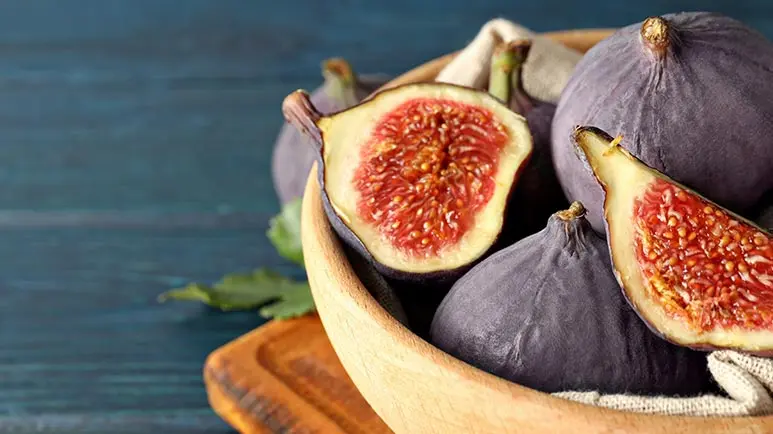Figù is a term that encapsulates a world rich in cultural significance, culinary applications, and historical relevance. Whether referring to the fruit of the fig tree (Ficus carica) or its symbolic uses in various cultures, figù holds a unique place in human civilization. This article aims to explore the many facets of figù, including its botanical characteristics, cultural implications, health benefits, culinary applications, and more.
Botanical Characteristics
The fig tree is a deciduous shrub or small tree native to the Mediterranean and Western Asia. It typically grows to about 10 to 30 feet tall, with large, lobed leaves that can reach up to 12 inches in length. The tree produces a unique fruit known as the fig, which is technically an inverted flower that develops a fleshy structure filled with tiny seeds.
The fig tree thrives in warm, dry climates, making it a staple in Mediterranean agriculture. It prefers well-drained soil and full sunlight, allowing it to flourish in areas where other crops may struggle. Fig trees are relatively low-maintenance, which contributes to their popularity among gardeners and farmers alike.
Historical Significance
Figs have a rich history that dates back thousands of years. They are one of the earliest cultivated fruits, with evidence of their cultivation found in ancient Mesopotamia and Egypt. Figs were highly valued in these societies, often considered a symbol of prosperity and fertility.
In ancient Greece, figs were associated with Dionysus, the god of wine and revelry. They were used in various religious ceremonies and were considered an essential part of the Greek diet. Figs were also mentioned in the Bible, symbolizing peace and prosperity. The fig tree appears several times in biblical texts, including the story of Adam and Eve, where fig leaves are used to cover their nakedness.
Cultural Implications
Figs are more than just a fruit; they carry significant cultural meanings across various societies. In Mediterranean cultures, figs are often associated with hospitality. It is customary to offer figs to guests as a sign of welcome and friendship. In many parts of the world, figs symbolize abundance and prosperity.
In Asia, particularly in countries like Turkey and Iran, figs are often used in traditional medicine and are believed to have healing properties. They are also used in rituals and celebrations, symbolizing fertility and prosperity.
In contemporary culture, figs have found their way into modern art and literature. They often symbolize temptation, sensuality, and the natural world. The soft, sweet flesh of the fig, combined with its unique appearance, makes it a popular subject in various artistic expressions.
Nutritional Profile and Health Benefits
Figs are not only culturally significant; they are also incredibly nutritious. They are rich in dietary fiber, antioxidants, vitamins, and minerals, making them a healthy addition to any diet. Here’s a closer look at their nutritional profile:
- Calories: Figs are relatively low in calories, with about 74 calories per 100 grams.
- Carbohydrates: They are high in natural sugars, providing a quick energy boost.
- Fiber: Figs are an excellent source of dietary fiber, promoting healthy digestion.
- Vitamins: They are rich in vitamin B6, vitamin K, and vitamin C.
- Minerals: Figs provide essential minerals such as potassium, magnesium, and calcium.
The health benefits of figs are numerous. The high fiber content aids in digestion and helps prevent constipation. The antioxidants present in figs may help combat oxidative stress and reduce inflammation in the body. Figs are also known for their potential to lower blood pressure and promote heart health due to their potassium content.
Furthermore, the natural sugars in figs provide a healthier alternative to refined sugars, making them an excellent choice for satisfying sweet cravings. Incorporating figs into a balanced diet can contribute to overall health and well-being.
Culinary Applications
Figs have long been a beloved ingredient in various culinary traditions. Their unique flavor, which balances sweetness and subtle earthiness, makes them versatile in both sweet and savory dishes. Here are some popular culinary uses for figs:
- Fresh and Dried Figs: Fresh figs are often enjoyed on their own or added to salads for a burst of sweetness. Dried figs are a popular snack and are often used in baking and cooking.
- Fig Jam and Preserves: Figs can be transformed into delicious jams and preserves, perfect for spreading on toast or pairing with cheese.
- Fig Desserts: Fig tarts, cakes, and pastries highlight the fruit’s natural sweetness. Figs are often used in desserts paired with nuts and cheeses, creating a delightful contrast.
- Savory Dishes: In savory cooking, figs can be used in sauces, glazes, or salads. They pair well with meats like pork and duck and are often incorporated into Mediterranean dishes.
- Beverages: Figs can be used to infuse spirits, creating unique liqueurs or syrups. They also make a delightful addition to cocktails.
- Cheese Pairings: Figs are often paired with cheese, such as goat cheese or blue cheese, to create a balanced flavor profile.
- Salads: Fresh figs can elevate salads, adding a sweet and chewy texture. They pair beautifully with ingredients like arugula, walnuts, and balsamic vinaigrette.
Fig Farming and Sustainability
The cultivation of figs is gaining attention for its sustainability benefits. Fig trees are drought-resistant, making them suitable for arid environments where water is scarce. They require less water compared to other fruit trees, and their deep roots help prevent soil erosion.
As consumers become more aware of sustainable practices, fig farming is being recognized as an environmentally friendly agricultural option. Organic fig farming, in particular, is on the rise, with farmers focusing on natural pest control methods and sustainable soil management.
Figù in Modern Trends
In recent years, figs have gained popularity in modern cuisine and health trends. Their status as a superfood has led to increased interest among health-conscious consumers. Figs are often featured in health blogs, social media, and cooking shows, inspiring a new generation of cooks and food enthusiasts to incorporate this fruit into their diets.
The rise of plant-based diets has also contributed to the popularity of figs. Their natural sweetness makes them a popular ingredient in vegan desserts and snacks, providing a healthier alternative to refined sugars.
Conclusion
Figù, whether viewed as a fruit, a symbol, or a culinary ingredient, holds a special place in cultures around the world. Its rich history, nutritional benefits, and versatile applications make it a fascinating subject of exploration. From ancient times to modern cuisine, figs have been cherished for their sweetness and significance, embodying themes of abundance, hospitality, and health.
As we continue to appreciate the fig, let us also recognize the importance of sustainable farming practices that ensure this ancient fruit remains a cherished part of our diets for generations to come. The fig tree, with its deep roots and sprawling branches, serves as a reminder of the enduring relationship between humans and nature—a relationship that continues to bear fruit in the most delightful ways.

 Blog8 months ago
Blog8 months ago
 Blog4 months ago
Blog4 months ago
 Blog4 months ago
Blog4 months ago
 Life style1 day ago
Life style1 day ago
 Blog1 day ago
Blog1 day ago
 Entertainment3 months ago
Entertainment3 months ago
 Blog10 months ago
Blog10 months ago
 Tech10 months ago
Tech10 months ago








 Passion & Knowledge – Pick something you enjoy and know well.
Passion & Knowledge – Pick something you enjoy and know well. Understand Your Audience – Write for their needs and interests.
Understand Your Audience – Write for their needs and interests. Keyword Research – Use Ubersuggest or Ahrefs to find low-competition keywords.
Keyword Research – Use Ubersuggest or Ahrefs to find low-competition keywords. Inconsistent Posting – Post regularly to stay relevant.
Inconsistent Posting – Post regularly to stay relevant.

 Not a photo editor (limited retouching tools).
Not a photo editor (limited retouching tools).